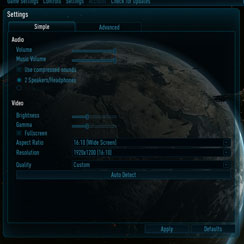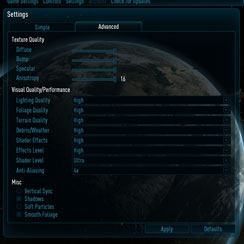Enemy Territory: Quake Wars
Publisher: ActivisionBuilt on an updated version of id Software's Doom 3 engine, Enemy Territory: Quake Wars is a team-based first person shooter that recently obtained the title of being the first game to use John Carmack's megatexture technology: a single texture that spans the entire map.
ET:QW also makes use of many vehicles and large open areas which means the action in view can get really intensive in this team based shooter. It's also the only game in this suite that utilises OpenGL instead of the pretty much industry-standard DirectX API. We used the full retail version of the game patched to version 1.4.
We recorded a timenetdemo on the Valley level which lasts for several minutes during an online game - this used lots of the different graphical effects to create what we've deemed to be a fairly typical slice of action to stress the system. We also created a custom autoexec file that enabled ultra high video settings, over and above that of the standard in game "high", including soft particles, as ATI has now remedied the display corruption present with that option enabled.
When anti-aliasing is enabled, the GeForce 8800 GT is around 13 percent faster than the GeForce 9600 GT and, when it’s disabled, that performance gap increases to between 20 and 25 percent, depending on the resolution. This looks to be another place where we can say that the GeForce 8800 GT’s performance is hampered by the memory bandwidth and pixel fillrate bottlenecks imposed upon it during the design stage.
The GeForce 9600 GT is faster than both the pre-overclocked Radeon HD 3850 and the standard Radeon HD 3870. The former is around 10 to 15 percent slower in most scenarios, but at 1920x1200 4xAA, the gap increases to 23 percent. Meanwhile, the latter is around six to nine percent slower, but again it falls further behind at 1920x1200 – this time the difference is 15 percent.

MSI MPG Velox 100R Chassis Review
October 14 2021 | 15:04











Want to comment? Please log in.